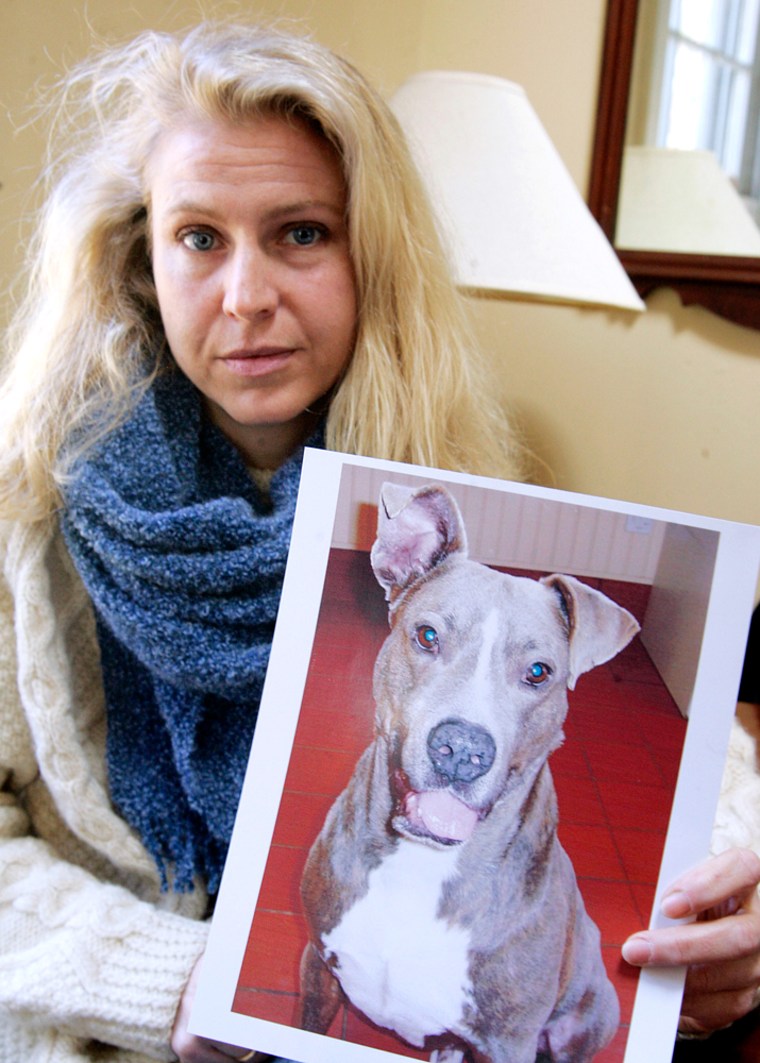It was the last thing Gail Murphy thought she had to worry about when she took her dog for a walk through a suburban nature preserve on a quiet Sunday morning.
Zephyr, a floppy-eared mixed breed Murphy adopted in 2004, ran about 50 feet ahead -- out of eyesight -- for a sip from a pool of standing water. The next thing Murphy heard was a muffled "bang!"
When she got to Zephyr, he was thrashing about, trying desperately to free his head from a steel-jawed trap. Before long, his body went limp.
"I was looking into his eyes," she recalled. "I knew I had no time. I knew he was going to die."
Some experts say such accidents will only increase as the suburbs continue to encroach on the domain of outdoorsmen, who for centuries have set traps to control predators and sell animals' furs.
"Trappers have to understand: One year, they could be working in a cornfield and the next year there's a housing development there," said Dave Sollman, executive administrator of the Indiana-based National Trappers Association.
Although documented reports of pets being caught in traps are rare, state legislator Jon Cooper said he has no doubt that "dozens or hundreds of pets that don't come home" are killed by traps.
Laws regulating the estimated 146,000 trappers nationwide differ from state to state. About a dozen states have banned trapping in some or all forms, including five -- Arizona, California, Colorado, Massachusetts and Washington -- that enacted bans through ballot initiatives, said Michael Markarian, executive vice president of the Humane Society of the United States.
In New York, traps can be placed legally on any land or under water, providing they are at least 100 feet from a building and the land is not posted "no hunting" by its owner. Now, there are efforts to ban traps at government-owned property.
Last week, the Southampton Town Board passed "Zephyr's Law," outlawing body grip traps on town-owned property, including parks and nature preserves. Under state law, only the New York Department of Environmental Conservation can regulate trapping, but towns can ban trapping on lands they own.
But suburban communities also face the problem of "nuisance animals." State wildlife biologist Gordon Batcheller said there are three times as many raccoons per square mile in suburban areas such as Long Island compared to upstate farming regions.
Hank Dam, a regional director of the state Trappers Association, said trappers keep such booming populations in check.
"The animals have adapted; they live in sheds, in sewers," said Dam, 84, who has been trapping since he was 10. "We made a happy home for them; there's plenty of garbage and food for them. They are more of a menace than any trapper's ever been."
Murphy, 40, a natural skin care company sales rep, says she may never return to the nature preserve, less than a mile from her home.
"I'm terrified," she said. "This is a place where I would go and pick wild berries. We swam there. It was such a peaceful, wonderful place. Now that's gone."
